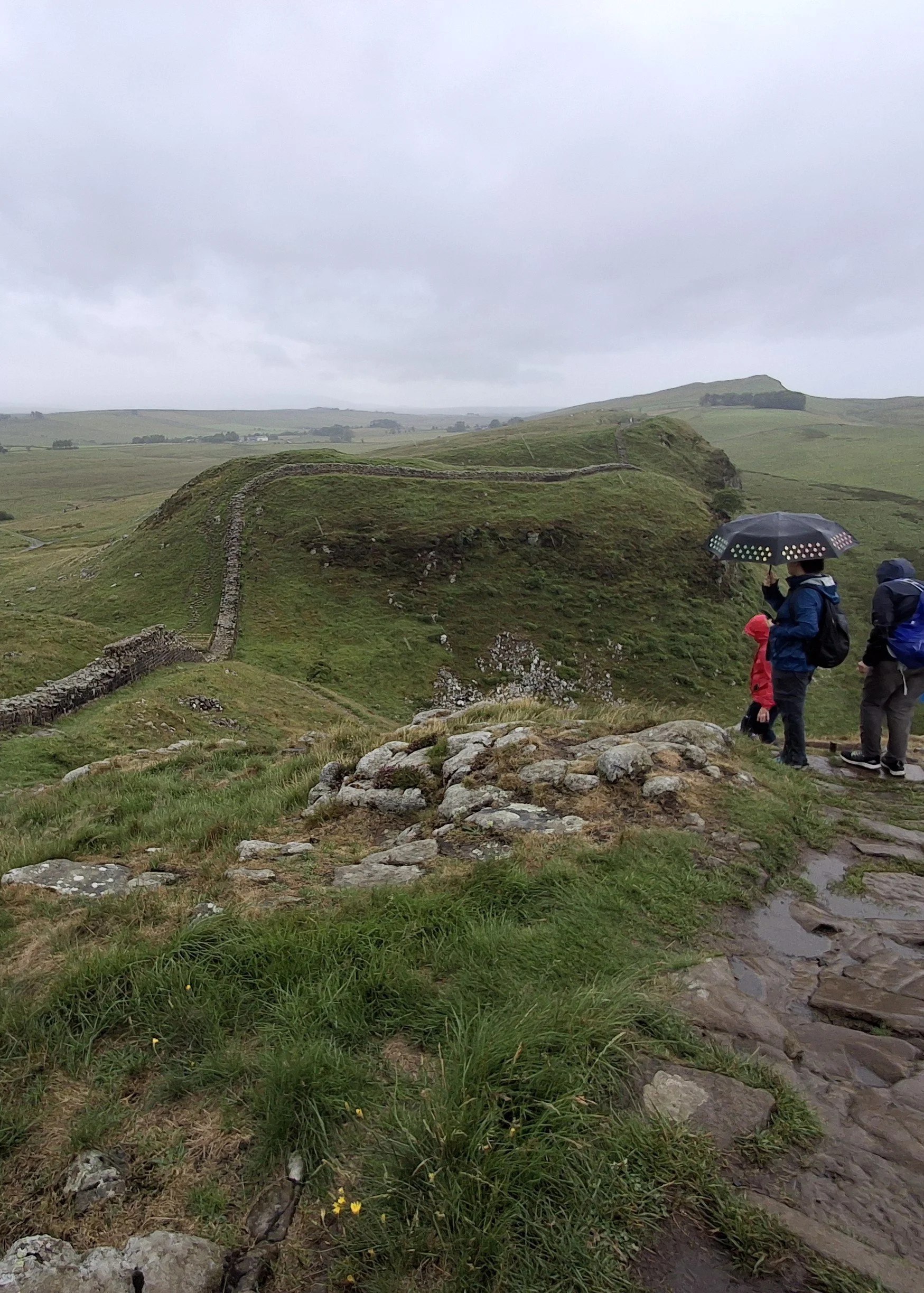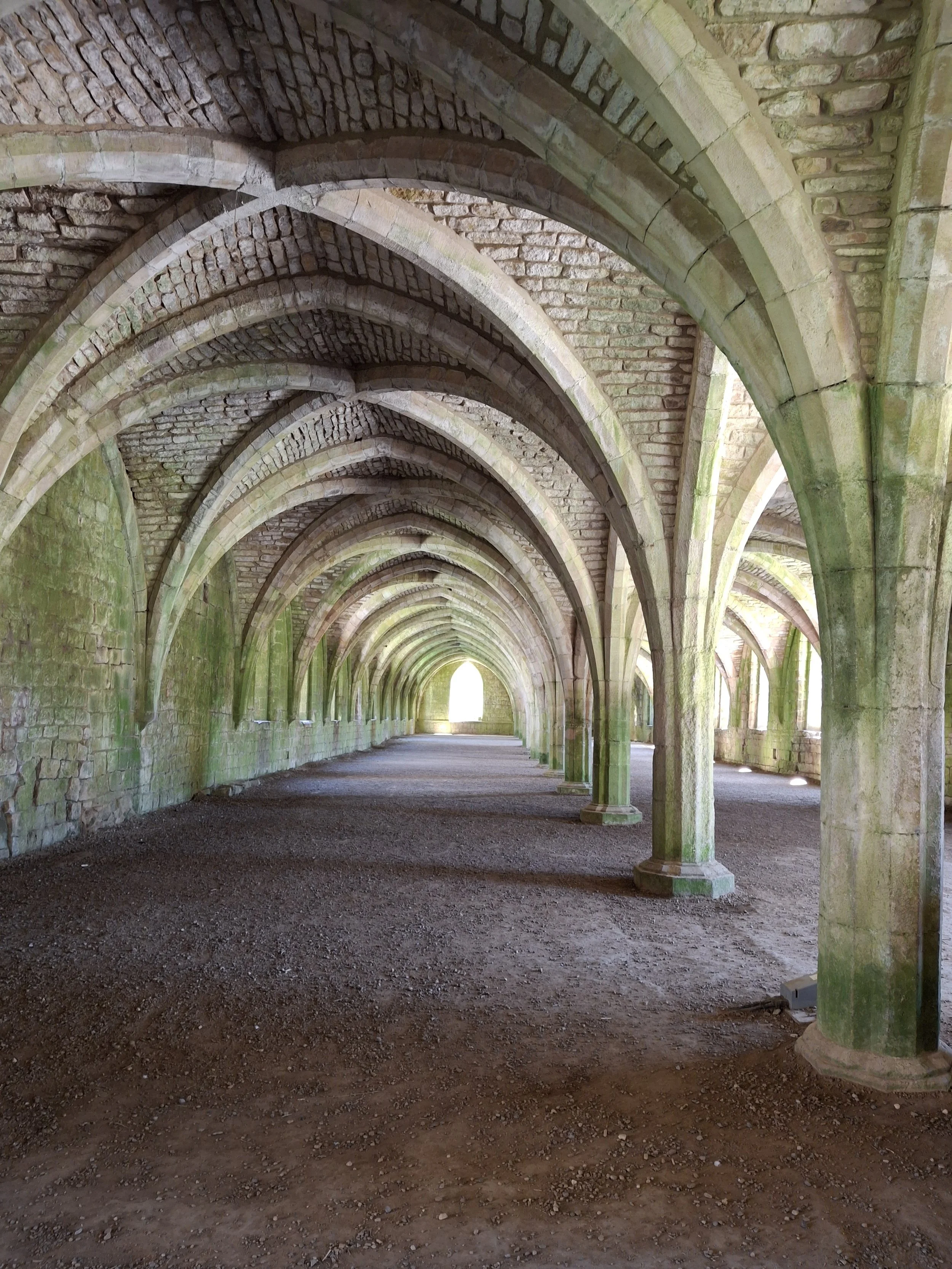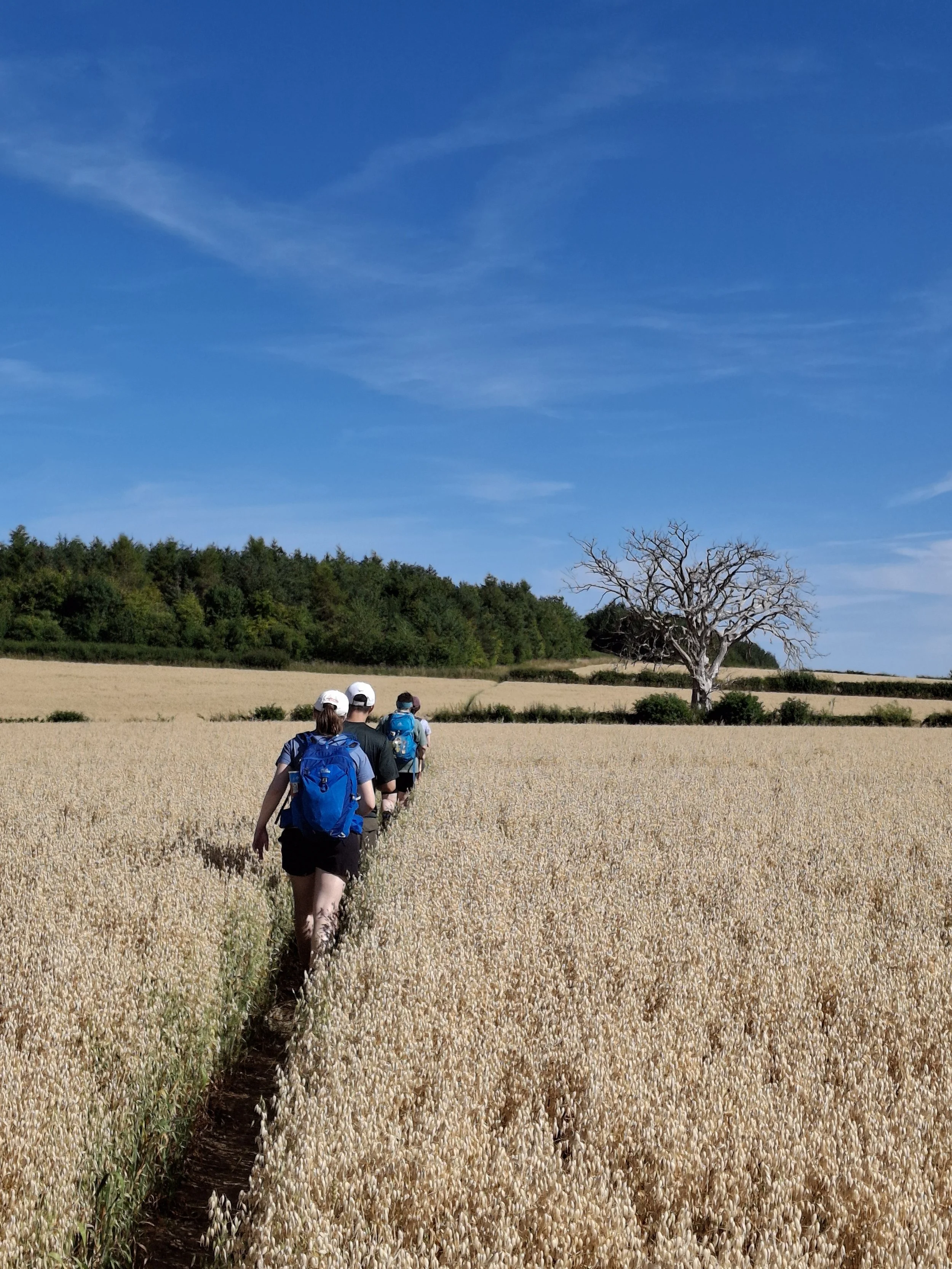Walking With Saints
FROM SPIRITUAL DIRECTOR & PAX ADJUNCT FACULTY, BOBBIE BEGGS-SARGENT
As I pulled off my raincoat and settled into a chair at the window table of a bustling pub way out in the countryside, my seatmate looked over at me and said “Bobbie. You are really wet!” I looked down, surprised. She was right. I was quite wet – a sign that I need a new raincoat – and I hadn’t even noticed.
For the last couple of miles of our walk along Hadrian’s Wall in England I had been engrossed in conversation about what we were noticing on the pilgrimage we were engaged in (as well as admiring the views.) Several of us shared what we had enjoyed or been surprised by in the last 5 or so days. Towards the end, we specifically centered in on a lament each of us had written in an old crypt (from 1000 AD but on a site lived and worshipped at by Celtic Christians since the 600s!) We had spent about an hour in silence there, asking God to show us what we might want or need to lament in our life, and then wrote it out and prayed it to God. It was a powerful time and moved some to quiet tears. There is something absolutely amazing, I think, about engaging deeply with God in places where people have been seeking and engaging with God for centuries and millennia - thin places, as they’re called.
That’s one of the things I love about leading people on these trips, July 2025’s trip being the third. As they spend many days with a small group, exploring beautiful places, learning about amazing Saints and saints, and engaging in spiritual practices in thin places, people are changed. Sometimes we share what God’s doing and showing us with each other; sometimes people just worship, pray, ponder and quietly journal.
My daughter, a medieval historian, and I developed these trips to help people physically walk in the footsteps of Christians who have lived and tried to be faithful in days gone by. We learn the stories of a few famous Saints and visit sites associated with them, not primarily as tourists, but as fellow believers seeking a fresh word from God. What were Cuthbert, Bede, Aidan, Hilde, and Aelred like? How did they relate to God? What are we to think of the miracles ascribed to them, both during their lives and after their deaths?
We also think and learn about the many, many nameless saints who, like us, were living their lives and seeking to remain faithful while needing to adapt to large and small shifts in their worlds. Shifts came about in England through the decision to follow Roman vs. Celtic Christianity, not both, Norman and Viking invasions, and the near complete destruction of monasteries and that way of life, to name a few. These ‘small s’ saints are part of “the great cloud of witnesses” as well, of course. How did they live out their faith in good, bad and cataclysmic times?
Tying the Saints and saints together, we wonder why so many saints went on pilgrimages to the crypts or major places of importance for the Saints named above?
They trekked many, often dangerous, miles believing they could ask for literal healing or something from God in these special places known to give some people just these type of answers to prayers. In my post-Enlightenment, often quite ‘heady’ faith it is all too tempting to discount what actually happened at these sites – or may have happened, and might still. Going on pilgrimage has taught me to remain open and willing to take it in… and wonder.
C.S. Lewis wrote “Every age has its own outlook. It is specially good at seeing certain truths and specially liable to make certain mistakes…People were no cleverer [in the past] than they are now; they made as many mistakes as we. But not the same mistakes.” We can expand our understanding of our faith and perhaps shift or broaden our perspective on God and what it means to live out our faith by spending time pondering those who have gone before us. Ours is an ancient faith, yet it can be tempting for us as believers to think that we somehow have the precise right way to be a Christian. What can others teach us; show us? How can God use the witness of their lives to open up our spirits to more?
By bringing ourselves bodily to the places people worshiped, studied, lived and died centuries, if not millennia, ago, and practicing some spiritual practices that would have felt familiar to them, we can bridge the gap between ourselves and this part of the great cloud of witnesses. We literally walk a few miles in their shoes to places where they spent time – and maybe get wet or tired or develop blisters, as they surely did! Sometimes, we walk in silence and think about the pilgrims that walked these same paths before us, and the God and Saints that inspired them. We get to experience in a tiny way, or at least imagine, what their lives were like. They become our brothers and sisters in the Lord more fully. Their vision of God informs our understanding of God and gets merged with how we have actually encountered God as we’ve taken this journey. And so, we are changed and our Christian faith is broadened and deepened.
Who from our ancestors in the faith would you like to get to know better? Not only ‘study,’ but go to a quiet place, new church, retreat center, or even country and sit, walk, and/or pray with them in mind - and imagine their life? What do you think God can show you through them?
Take to heart this quote from Saint Bede the Venerable - “Unfurl the sails, and let God steer us where He will.”
Looking to learn more? Connect with Bobbie & explore more of the ins & outs of Past and Presence: Exploring Faith’s Roots on their website here. If you want to continue leaning into our fall theme of soul care & the body, join us virtually on October 25th for The Healing Gift of Movement!



